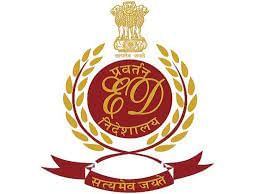UPSC Daily Current Affairs- 27th February 2024 | Current Affairs & Hindu Analysis: Daily, Weekly & Monthly PDF Download
GS-I
Lebanon
Subject: Geography

Why in News?
The Israeli military said its air force on Monday struck targets of the militant Hezbollah group “deep inside Lebanon”.
Background:
- The strikes are among the deepest into Lebanon since the Israel-Hamas war began more than four months ago. They come a day after Israel’s Defense Minister vowed to step up attacks on Hezbollah even if a cease-fire is reached with Hamas in the Gaza Strip.
- Lebanon, officially the Republic of Lebanon, is a country in the Levant region of West Asia.
- It is bordered by Syria to the north and east, by Israel to the south, and by the Mediterranean Sea to the west.
- Lebanon’s capital and largest city is Beirut, followed by Tripoli and Jounieh.
- Lebanon is a founding member of the United Nations and of the Arab League and is a member of the Non-Aligned Movement and the Organization of Islamic Cooperation.
- The border with the Israeli-occupied Golan Heights is disputed by Lebanon in a small area called Shebaa Farms.
Source: Associated Press
Mauritius
Subject: Geography

Why in News?
More than 3,000 people are stranded in Mauritius waters after the Indian Ocean Island nation stopped a ship belonging to Norwegian Cruise Line Holdings from docking at its ports due to what it said was a health risk.
About Mauritius:
- It is an island country in the Indian Ocean, located off the eastern coast of Africa.
- Land:
- It lies about 500 miles (800 km) east of Madagascar in the Indian Ocean.
- Its outlying territories are Rodrigues Island, situated about 340 miles (550 km) eastward, the Cargados Carajos Shoals, 250 miles (400 km) north-eastward, and the Agalega Islands, 580 miles (930 km) northward from the main island.
- Mauritius also claims sovereignty over the Chagos Archipelago(including Diego Garcia), some 1,250 miles (2,000 km) to the northeast, although this claim is disputed by Britain.
- Relief:
- It is volcanic in origin and is almost entirely surrounded by coral reefs.
- The northern part is a plain that rises to a central plateau. The plateau is bordered by small mountains that may have formed the rim of an ancient volcano.
- Climate: The climate is maritime subtropical, with fairly uniform temperatures throughout the year.
- Capital: Port Louis
- Languages: English, French, Mauritian Creole, Bhojpuri, Hindi, Chinese, Marathi.
- Government:
- Mauritius gained independence from the UK in 1968 as a Parliamentary Republic and has remained a stable democracy with regular free elections.
- The chief of state is the president, and the head of government is the prime minister.
- Mauritius is a member of the Common Market for Eastern and Southern Africa (COMESA) and the Southern African Development Community (SADC).
- Population:
- Approximately two-thirds of the population is of Indo-Pakistani origin, most of whom are descendants of indentured labourers brought to work in the sugar industry during the 19th and early 20th centuries.
- About one-fourth of the population is Creole (of mixed French and African descent), and there are small numbers of people of Chinese and Franco-Mauritian descent.
- Religion: About half of the population is Hindu, about one-third is Christian.
Source: News 18
GS-II
Investor Information and Analytics Platform
Subject: Government Schemes

Why in News?
Recently, the Union Minister of State for Electronics and IT, Skill Development and Entrepreneurship launched the ‘Investor Information and Analytics Platform.’
About the Investor Information and Analytics Platform:
- It acts as a one-stop shop for startups to seamlessly access Venture Capitalists (VCs) and investor networks, Govt schemes and several other components of the startup landscape for all stakeholders.
- By integrating information at different levels, the platform is also a one-stop shop for entrepreneurs to search for information on government agencies, incubators, investors, VCs and banks that invest in startups.
- This platform has been developed by the Researchers at the Centre for Research on Start-ups and Risk Financing (CREST) of IIT Madras.
- It will significantly help startup founders, entrepreneurs and Young Indians who intend to build their own devices, services and platforms for India and for the world.
- An important feature of this unique platform is “StartupGPT” which is an AI-based conversational platform whose function is to help ease information access for those who are navigating exhaustive data.
- A user will be able to ask queries in simple language to access the information they seek in real time.
- For the sustainability of the platform, full access will be provided at a very nominal cost so that maximum entrepreneurs can benefit from this resource.
Source: PIB
Powers of the Enforcement Directorate (ED)
Subject: Polity

Why in News?
The Supreme Court witnessed a clash between the Tamil Nadu government and the Directorate of Enforcement (ED) concerning the jurisdiction of the ED to probe “illegal” sand mining activities in the state.
- TN contested the ED’s authority to investigate sand mining under the Prevention of Money Laundering Act (PMLA), asserting that sand mining offenses were not scheduled under the PMLA.
Why did the ED step in?
- Whenever any offence is registered by a local police station, which has generated proceeds of crime over and above ₹1 crore, the investigating police officer forwards the details to the ED.
- Alternately, if the offence comes under the knowledge of the Central agency, they can then call for the First Information Report (FIR) or the chargesheet if it has been filed directly by police officials.
- This will be done to find out if any laundering has taken place.
About Enforcement Directorate (ED)
| Details | |
| Establishment |
|
| Nodal Agency |
|
| Jurisdiction | Nationwide |
| Functional Focus | Economic and financial offenses including money laundering, foreign exchange irregularities |
| Investigative Powers |
|
| Collaboration | Coordinates with various agencies (CBI, local police) and banks |
| Reporting Authority | Department of Revenue, Ministry of Finance |
| Corruption Investigations | Has a separate Economic Offenses Division |
| Notable Cases |
|
| International Cooperation | Works with international law enforcement for cross-border investigations (Interpol, FATF) |
| Public Interface | Accepts complaints and information regarding economic offenses |
| Transparency and Accountability | Regular reports to the Ministry of Finance; subject to oversight by judiciary and government bodies |
Source: Hindustan Times
[Question: 995272]
GS-III
 |
Download the notes
UPSC Daily Current Affairs- 27th February 2024
|
Download as PDF |
Dharma Guardian Exercise
Subject: Defence and Security

Why in News?
India and Japan have initiated a two-week military exercise.
Background:
- This exercise provides an opportunity for both nations to share best practices, develop inter-operability, and strengthen bilateral relations.
About The Dharma Guardian:
- The Dharma Guardian is an annual joint military exercise between the Indian Army and the Japan Ground Self Defence Force.
- The 5th edition of this exercise commenced on February 25, 2024, at the Mahajan Field Firing Ranges in Rajasthan, India.
- Inception: The exercise was initiated in 2018 as part of the growing bilateral defence cooperation between the two nations.
- Objective: The primary aim of Dharma Guardian is to enhance military interoperability and strengthen the strategic partnership between India and Japan.
- Alternating Locations: The exercise takes place alternately in India and Japan. It provides an opportunity for troops from both countries to train together, share best practices, and learn from each other.
- Focus Areas: During the exercise, soldiers engage in various tactical drills, including establishing temporary operating bases, conducting reconnaissance grids, setting up vehicle check posts, practicing cordon and search operations, and executing heliborne operations.
- Weapon Exhibition: Apart from the field exercises, there is also an exhibition of weapons and equipment. This showcases India’s ‘Atmanirbhar Bharat’ initiative (self-reliant India) and highlights the country’s growing defence industrial capability.
- Mutual Benefits: Dharma Guardian fosters mutual understanding, interoperability, and camaraderie between the armed forces of India and Japan.
Source: Hindustan Times
Plastic Pollution
Subject: Environment
Why in News?
A parliamentary panel raised concerns over the ineffective handling of plastic waste in the country, citing a report from the Comptroller and Auditor General (CAG).
Background:
- Public Accounts Committee (PAC) in its 57-page report underlined the absence of effective measures that could save people from the hazards of plastic pollution.
About Plastic Pollution
- Plastic pollution refers to the accumulation of plastic waste in the environment, leading to negative impacts on ecosystems, wildlife, human health, and overall ecological balance.
Issues associated with plastic waste in India:
- Like much of the world, India is struggling to dispose of its growing quantities of plastic waste given how ubiquitous it has become-from our toothbrushes to debit cards. A little over 10,000 tonnes a day of plastic waste remains uncollected.
- India’s packaging industry is the biggest consumer of plastics. A 2020 study onpackaging in India projects a loss of almost 133 billion dollars’ worth of plastic material value over the next decade due to unsustainable packaging. Unsustainable packaging involves general packaging through single-use plastic.
- The popularity of online retail and food delivery apps, though restricted to big cities, is contributing to the rise in plastic waste. India’s biggest online delivery start-ups Swiggy and Zomato are each reportedly delivering about 28 million orders a month.
- Polluting plastics can affect the world’s tiniest organisms, such asWhen these organisms become poisoned due to plastic ingestion, this causes problems for the larger animals that depend on them for food. Larger items, such as plastic bags and straws, can choke and starve marine life, while smaller fragments (microplastics) can cause liver, reproductive, and gastrointestinal damage in animals and it can directly impact the blue economy as well.
- TheWorld Health Organisation published shocking research in 2018 that exposed the presence of microplastics in 90% of bottled water. Plastic toxicity in humans can lead to hormonal disruption and adverse reproductive and birth outcomes.
How is India addressing the concerns regarding plastic waste?
- India launched anationwide awareness campaign on single-use plastics on World Environment Day in June 2022. A mobile app for Single Use Plastics Grievance Redressal was also launched to empower citizens to check the sale/usage/manufacturing of SUP in their area and tackle the plastic menace.
- Plastic Waste Management Amendment Rules of 2022 prohibits the manufacture, import, stocking, distribution, sale, and use of several single-use plastic items as of July 1, 2022. It has also mandatedExtended Producer Responsibility (EPR) that incorporates circularity by making manufacturers of products responsible for collecting and processing their products upon the end of the product’s lifetime.
- India Plastics Pact is thefirst of its kind in Asia. The Plastics Pact is an ambitious and collaborative initiative to bring stakeholders together to reduce, reuse, and recycle plastics within the material’s value chain.
- Project REPLAN (stands for REducing PLastic in Nature)launched by the Khadi and Village Industries Commission (KVIC) aims to reduce the consumption of plastic bags by providing a more sustainable alternative.
Source: Times of India
[Question: 995270]
Know Your Customer (KYC)
Subject: Economy

Why in News?
The government of India has formed an expert committee headed by Finance Secretary T V Somanathan to make its recommendations to bring out uniform Know Your Customer (KYC) norms.
About the Know Your Customer:
- It is a comprehensive process that financial and non-financial institutions follow to verify the authenticity and identity of their customers.
- The KYC process is mandatory for every customer before investing in any instruments or starting a bank account.
- In India at present, separate KYCs are needed for different financial products such as opening a bank account, investing in mutual funds, buying a life cover or investing in retirement-savings funds.
- Multiple KYCs, regular updates and even the exact specifications often prove to be a deterrent for new investors.
- To eliminate the need to do repeated KYC for investing across financial assets, the central government launched the Central KYC Records Registry.
- What is the Central KYC Records Registry?
- It was launched by the central government of India in 2016.
- It has been limited only to the capital markets.
- In fact, while dealing in securities markets, once KYC is done through a Securities and Exchange Board of India (SEBI) registered intermediary such as a broker, depository participant or mutual fund, customers do not have to undergo the same process again for fresh investments.
- The government authorised the Central Registry of Securitisation Asset Reconstruction and Security Interest of India (CERSAI) to perform the functions of the CKYCR.
- This centralised registry receives, stores, safeguards and retrieves the KYC records of a customer in a digitally secure electronic format.
- Customers have to submit their KYC details only once with any of the reporting entities of the Reserve Bank of India, Sebi, Insurance Regulatory and Development Authority of India, Pension Fund Regulatory and Development Authority at the time of opening an account.
- Once the information is registered, customers will receive a 14-digit KYC Identification Number that can be used at any financial institution registered with CERSAI.
- Financial institutions can access the CKYCR database to retrieve the KYC records of customers while onboarding them.
- In case of any changes in the details of a customer, the reporting entity will initiate a centralised KYC (CKYC) update after taking the latest KYC record of the customer.
Source: Business Standard
Bitcoin Halving: A Quadrennial Crypto Phenomenon
Subject: Science and Technology

Why in News?
Just as the sporting world anticipates the Olympics every four years, the cryptocurrency community eagerly awaits its own quadrennial event: the Bitcoin halving.
- Scheduled for April, this event marks a crucial milestone in the world of Bitcoin mining and trading.
What is Bitcoin Halving?
- Reward Reduction: Bitcoin halving entails a 50% reduction in the reward paid to Bitcoin miners for successfully processing cryptocurrency transactions. This reduction aims to maintain the scarcity of Bitcoin and regulate its supply.
- Mining Process: Bitcoin miners utilize advanced computer equipment to solve complex mathematical puzzles through a process called ‘Proof of Work,’ crucial for expanding Bitcoin’s blockchain.
- Blockchain Integrity: The halving mechanism ensures the integrity and security of the Bitcoin blockchain by adjusting the rate at which new coins are created, maintaining a controlled inflation rate.
Analogical Explanation
- Grocery Store Contest: Analogous to a group of cashiers competing to tally up items in a grocery store, Bitcoin miners race to solve cryptographic puzzles to claim rewards.
- Equipment Advantage: Cashiers with superior equipment have a higher chance of winning the contest, akin to Bitcoin miners with cutting-edge technology.
- Economic Incentives: The analogy highlights the economic incentives driving both miners and cashiers to optimize their resources for maximum efficiency and profitability.
Implications for Crypto Investors
- Scarcity and Value: Bitcoin halving reduces the rate at which new coins are released, enhancing Bitcoin’s scarcity and potentially driving up its value, similar to gold.
- Historical Context: Bitcoin halving occurs approximately every four years, with past events influencing market dynamics and investor sentiment.
- Market Speculation: Investors often speculate on the impact of halving events, with some anticipating price surges while others remain cautious due to the unpredictability of market reactions.
Impact on Mining and Market Dynamics
- Corporate vs. Individual Miners: Corporate miners may prioritize maximizing rewards before the halving, while individual traders and investors may strategize based on market trends.
- Geopolitical Factors: Shifts in mining operations across different countries, driven by factors like regulatory changes and electricity costs, influence Bitcoin’s ecosystem.
- Technological Advancements: The evolution of mining hardware and techniques plays a significant role in determining mining efficiency and profitability, especially in the lead-up to halving events.
- Market Volatility: Despite attempts to predict market movements, Bitcoin’s journey remains highly volatile, influenced by factors beyond halving events.
Source: The Hindu
[Question: 995271]
|
39 videos|4560 docs|976 tests
|
FAQs on UPSC Daily Current Affairs- 27th February 2024 - Current Affairs & Hindu Analysis: Daily, Weekly & Monthly
| 1. What is the significance of the Dharma Guardian Exercise mentioned in the article? |  |
| 2. How does the Know Your Customer (KYC) process help in preventing financial crimes? |  |
| 3. How does the Investor Information and Analytics Platform mentioned in the article benefit investors? |  |
| 4. What are the powers of the Enforcement Directorate (ED) mentioned in the article? |  |
| 5. How does plastic pollution impact the environment, as discussed in the article? |  |

































